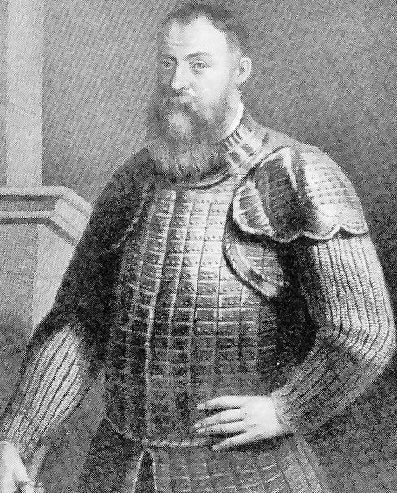By May 1595 – almost two years into what would become known in Irish history as the Nine Years War – the relief of the Monaghan garrison had become crucial for the Crown forces.
Bagenal led out an army of 1750 men from
Bagenal’s defeat, reported as a tactical withdrawal to Newry, was the first of O’Neill’s victories. Bagenal had to be reinforced and revictualled at Newry by sea, sending back his wounded to
In December 1596, and again in June 1597, Bagenal successfully revictualled the garrison at
He knew the terrain well as far as
Some dispatches say that his body fell into O’Neill’s hands, others that it was brought off the field with those who sought refuge in Armagh Cathedral and was buried there, but in all probability it was buried in his father’s church, St Patrick’s in Newry.
The Irish historian C. P. Meehan cites an almost contemporary character description of Bagenal:
He was in sooth, a greedy adventurer, restless, rapacious, unscrupulous; in a word, one who deemed it no sin or shame to aid in any process by which the rightful owner might be driven from his holding provided he got share of the spoil. (Meehan, 29-30)
Bagenal is also given a certain literary immortality in Sir Walter Scott’s romantic ballad Rokeby.
… Ralph Bagenal …
